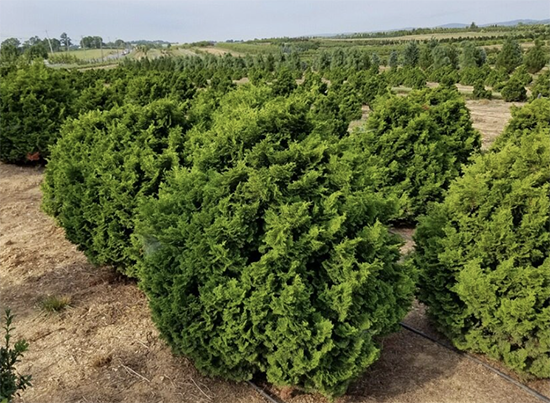Customers are VERY interested in how different shrubs and trees tolerate sun or shade once they are installed in a landscape. They may be particularly interested after a bad experience with a plant that burned up in the sunlight or failed to thrive in too much shade. We all know that most plants do well in part shade/part sun conditions.
For that smallish subset of shade loving shrubs and ornamental trees, shade is a matter of degrees.
First off, all the trees and shrubs we grow here are happy in full sun--even those that are historically known as understory trees, the ones you see growing at the edge of the woods. These are shade tolerant plants, but if you put them in dense shade, they won’t be happy.
Unlike the open fields at a nursery, where sun exposure is constant, the amount of sunlight available in different areas of a residential landscape can vary widely. And although this is less an issue for trees and shrubs, it is something that has to be taken into account when making plant selections.
Defining the Degrees of Shade
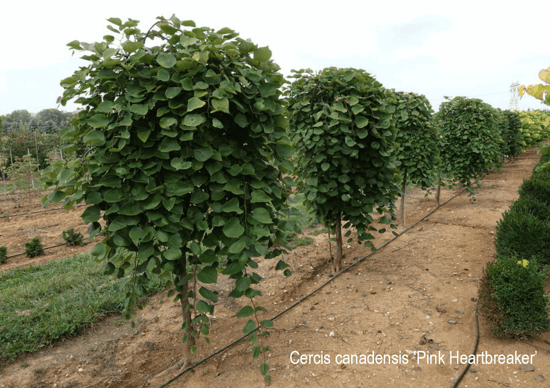
Defining degrees of shade is important so you can make the right choices for planting in shady conditions. Here are a few terms we use to define degrees of shade, and the right shade tolerant plants for that degree of shade: High shade, dappled shade, dense/dark.
High shade: These are woodland areas where the canopy is high, and light enters early and late in the day. Light gets to the ground but is mostly blocked during mid day hours by the high canopy depending on the type of trees present.
Dappled shade: This would be an area with a thin canopy, like the edge of the woods or areas of a lawn with a few mature trees. Sun gets through all day but without the intensity of being out in full sunlight.
Dense/Dark: Pretty self-explanatory. Areas with a dense canopy where sunlight does not reach. Good for mushrooms. Not great for most everything else we like to see.
Phototropism: This is a related term that has to do with light intensity. Like those Philodendrons in your window that you have to rotate periodically, plants will grow in the direction of the main light source. Sunflowers are the most obvious example of this, but all plants are looking to soak up that sunlight when they can.
Finding the Right Balance of Sun & Shade
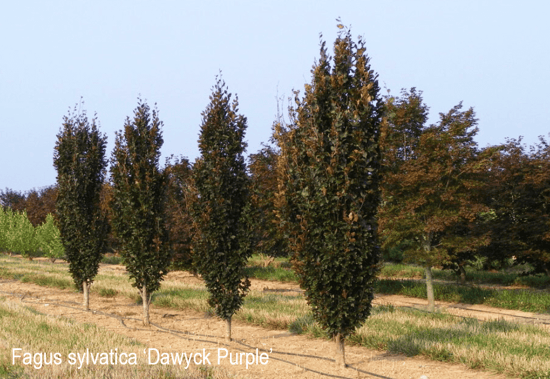
How do you avoid problems? Too much sun, especially afternoon exposure, can overheat plants and dry them out. Air temperature combined with the radiation intensity can be too much for young plants and trees. On the other hand, too much shade combined with dense growth causes poor air flow, which in turn may invite fungus (anthracnose and powdery mildew caused by discula destructiva). Many plants cannot survive in those conditions.
The deeper the shade, the more difficult it will be for any tree to develop properly. In deep shade, many of the flowering trees will not set flowers or fruit as well as similar plants given more sunlight. Nevertheless, some will adapt to shade conditions rather well.
Shade Tolerant Shrubs and Ornamental Trees
Here’s a guide we’ve come up with for some common trees and the degree of shade appropriate for them. You’ll notice there is exactly one, Carpinus betulus, that is tolerant of heavy shade.
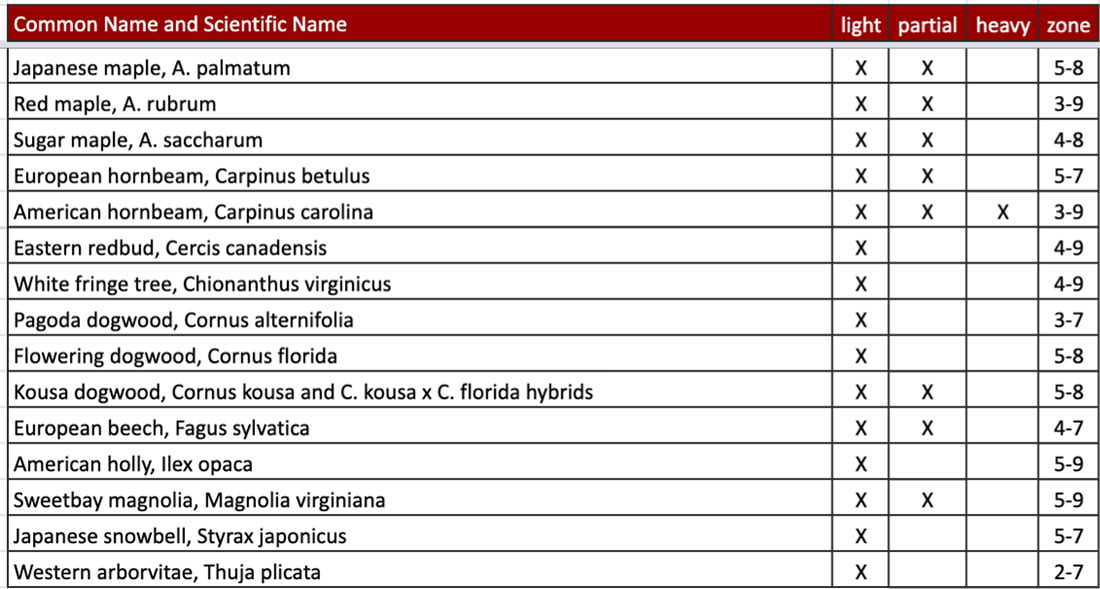
So, you have lots of options for trees that are content with light and partial shade. What about shrubs? How do they react to light and shade?
The shrubs and understory plants in this list will tolerate shade conditions better than most. In fact, a few shrubs require at least some protection from direct sunlight to avoid leaf burn during mid morning to late afternoon.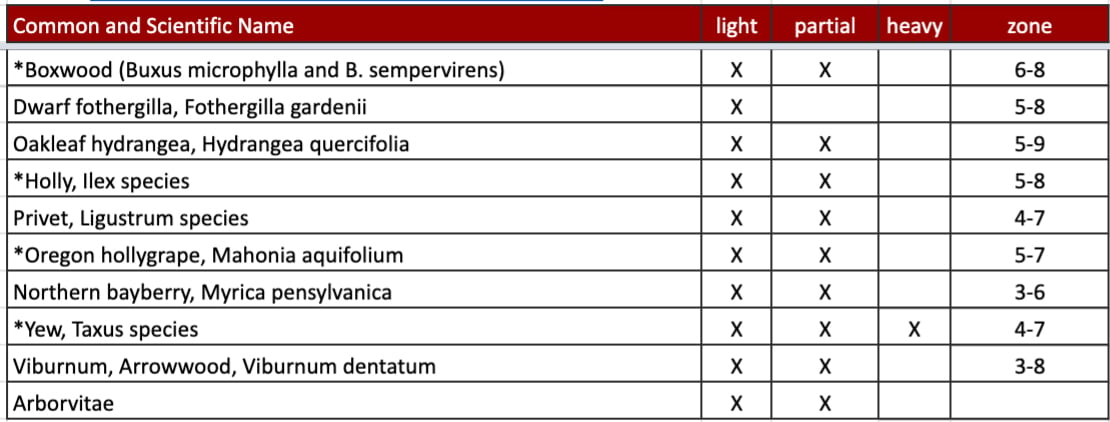
The Yew is the only shrub that will tolerate heavy shade. So, if you have a densely shaded area (less than three hours of sun) that you need to fill in, Taxus is your best bet. There is a variety of shade tolerant conifers including the Chamaecyparis obtusa cultivars that can work in low light conditions depending on the situation.
Shade and Sun - Subject to Change
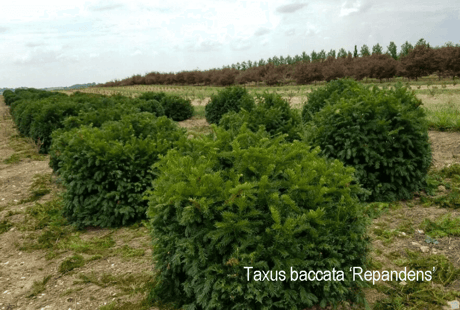
The amount of light available to a plant has a direct effect on its eventual success--which is why you always make note of light conditions on the property before purchasing plants. It’s important to help your customers understand that landscapes change over time. That sunny flower garden will become more shady as bordering trees and shrubs fill out. The loss of a large tree could cause a once shady spot to open up to full sun. Changes in degrees of sun and shade are going to happen naturally. Knowing that, you can work with your customers to make the right choices for now and, eventually, the right replacement choices later as the landscape matures.
Reserving the plants you need for when you need them can be a real challenge. Download our ebook Solving Plant Shortages in a High Demand Landscaping Market to learn about practical solutions to common plant sourcing problems.




